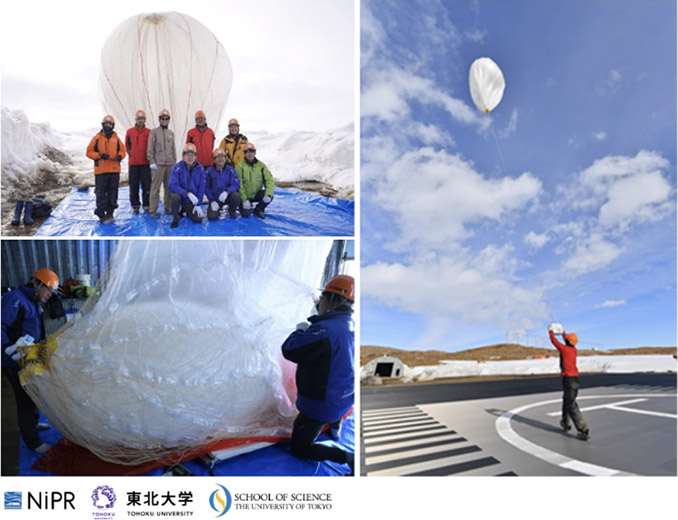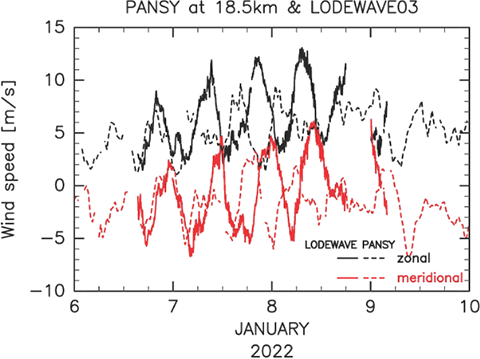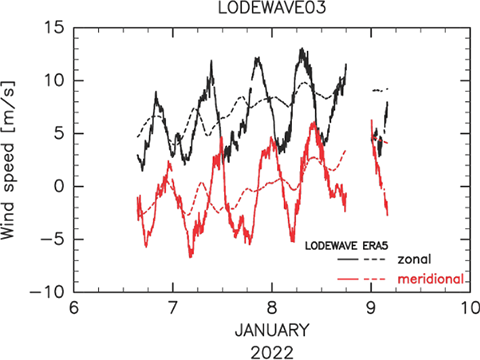National Institute of Polar Research
Gaps identified in gravity wave simulations over Antarctica
December 25,2024
Advanced atmospheric models fail to capture full gravity wave dynamics
Tachikawa, Japan -- Spotting flaws is sometimes the first ripple in making waves of innovation.
Comparing directly observed gravity waves with the latest advanced simulations, researchers from the Research Organization of Information and Systems (ROIS) and their colleagues have revealed significant limitations in current atmospheric modeling. Their findings emphasize the complexities of these atmospheric waves and their impacts on weather and climate systems.
The study was published in the Journal of the Meteorological Society of Japan on Sept. 2.
Gravity waves resemble the ripples created when you throw a pebble into a still pond, but they travel through the air, instead of water. Though mostly invisible, these waves play a major role in shaping weather and climate, and they are a major culprit behind the turbulence you have likely experienced on a plane. Scientists and climate modelers have been going above and beyond to characterize these atmospheric phenomena.
“We aimed to characterize the gravity waves we observed, assess how well they are represented in the latest reanalysis ERA5, and pinpoint where the model falls short,” said Yoshihiro Tomikawa, an associate professor at ROIS and lead author of this study.
ERA5 is a high-resolution atmospheric reanalysis data obtained by assimilating observation data into a simulation and widely used in climate research.
From January to February 2022, the team conducted simultaneous observations with a super-pressure balloon and a large-scale atmospheric radar called PANSY at Syowa Station in Antarctica. They detected gravity waves with near-inertial frequencies (NIGWs) in the lower stratosphere. ERA5, while able to qualitatively capture these NIGWs, underestimated their amplitude and failed to represent one of the observed wave packets.

Launch of a super-pressure balloon at Syowa Station, Antarctica (January–February 2022).
“Our study shows that even high-resolution general circulation models used for the latest reanalysis cannot fully reproduce gravity waves and their effects,” Tomikawa said.
The shortcomings likely stem from ERA5’s inability to simulate waves with very short vertical wavelengths and its limitations in tracking their exact position.
This study highlights both the importance of direct observations and the challenges of accurately modeling small-scale atmospheric processes like gravity waves. Addressing these simulation gaps is critical for enhancing weather prediction and climate modeling.
“We will continue simultaneous observations by super-pressure balloons and PANSY radar to reveal the 3D structure of gravity wave effects over Antarctica by combining the observed data, models, and gravity wave theory,” Tomikawa said.

Time variations of (black) zonal and (red) meridional winds along trajectories of LODEWAVE 3. Solid lines represent LODEWAVE data, while dashed lines represent PANSY radar data at an altitude of 18.5 km.

Time variations of (black) zonal and (red) meridional winds along trajectories of LODEWAVE 3. Solid and dashed lines represent LODEWAVE and ERA5 data, respectively.
Funding
National Institute of Polar Research under MEXT,
JSPS KAKENHI Grant Numbers 18H01276 and 21H01160.
#
INSERT BOILERPLATE
Proposed Summary
Researchers revealed significant limitations in current atmospheric models by comparing observed gravity waves with ERA5 simulations. ERA5 underestimated wave amplitudes and failed to capture a key wave packet. The findings highlight challenges in simulating small-scale phenomena.








